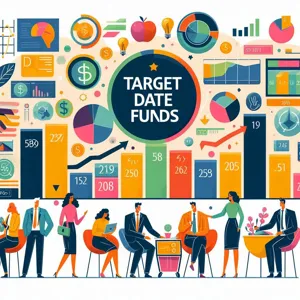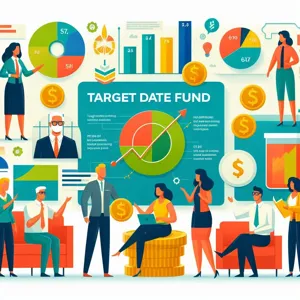In today’s world, more and more investors are seeking to make a positive impact through their financial choices.
Investing with purpose goes beyond simply aiming for financial returns — it’s about aligning your investments with your personal values and beliefs. Whether you’re passionate about environmental sustainability, social justice, or ethical business practices, choosing investments that reflect your principles can help you feel more connected to your portfolio and confident in your financial future. In this comprehensive guide, we’ll explore how to identify your core values, evaluate investment options that align with those values, and build a purposeful portfolio that not only grows your wealth but also contributes to the world you want to see.
1. Understanding Purpose-Driven Investing

Purpose-driven investing, also known as values-based or socially responsible investing, goes beyond the traditional goal of financial returns. It involves selecting investments that not only offer the potential for profit but also align with your personal values and contribute positively to society. Whether your passion lies in environmental sustainability, social justice, ethical governance, or supporting community development, purpose-driven investing allows you to channel your money into companies and projects that reflect these priorities.
Understanding this approach begins with recognizing that your investment choices can have a meaningful impact on the world. By consciously directing funds toward businesses that prioritize ethical practices, environmental stewardship, or social equity, you not only pursue financial growth but also promote the causes you care about. This alignment between your money and your morals creates a sense of fulfillment and reinforces your commitment to making a difference, all while building your financial future.
2. Defining Your Personal Values
Before you can choose investments that truly resonate with you, it’s essential to take a step back and clearly define your personal values. These values serve as the foundation for your investment decisions, ensuring that your portfolio not only grows financially but also reflects what matters most to you. Start by reflecting on the causes and principles you care deeply about—whether it’s environmental sustainability, social justice, ethical labor practices, or community development. Consider writing down a list of these core beliefs and priorities. This process helps you gain clarity on what you want your money to support and enables you to filter out investment options that don’t align with your ethos. Remember, investing with purpose isn’t just about avoiding harm; it’s about actively contributing to positive change that you believe in. By defining your values first, you set the stage for building a portfolio that feels meaningful and fulfilling, turning your investments into a powerful extension of your personal mission.
3. The Importance of Aligning Investments with Values

Aligning your investments with your personal values is more than just a feel-good strategy—it’s a powerful way to ensure that your financial growth contributes to causes and industries you genuinely care about. When your portfolio reflects your beliefs, whether that’s environmental sustainability, social justice, or corporate ethics, you create a meaningful connection between your money and your mission. This not only enhances your sense of purpose but can also motivate you to stay engaged and informed about your investments. Moreover, values-aligned investing helps drive positive change by directing capital toward companies that prioritize responsible practices, encouraging better business standards across industries. By choosing investments that resonate with your principles, you’re not only seeking financial returns but also supporting the kind of world you want to live in—making your money work harder and with heart.
4. Types of Purpose-Driven Investments
When it comes to investing with purpose, understanding the different types of purpose-driven investments is essential. These options allow you to align your financial goals with your personal values, making your investment portfolio not just profitable but also meaningful.
**1. Environmental, Social, and Governance (ESG) Funds:**
ESG funds focus on companies that meet specific criteria related to environmental sustainability, social responsibility, and corporate governance. These funds screen out industries such as fossil fuels or tobacco, and instead emphasize businesses committed to clean energy, fair labor practices, and transparent management.
**2. Socially Responsible Investing (SRI):**
SRI takes a more values-based approach by actively excluding investments in companies or sectors that conflict with your beliefs, such as weapons manufacturing or gambling. This approach often involves negative screening and may prioritize companies that contribute positively to society.
**3. Impact Investing:**
Impact investments target companies, organizations, or funds with the explicit goal of generating measurable social or environmental impact alongside a financial return. This can include investments in affordable housing, renewable energy projects, or social enterprises addressing issues like education and healthcare.
**4. Community Investing:**
This type of investing directs capital to underserved communities or projects that promote economic development, such as small businesses, local nonprofits, or microfinance institutions. Community investing helps foster growth where it’s needed most, often with a focus on equity and inclusion.
**5. Green Bonds:**
Green bonds are fixed-income securities issued to finance environmentally friendly projects such as renewable energy installations, energy efficiency improvements, or sustainable agriculture. They offer investors a way to support ecological initiatives while earning steady returns.
By exploring these different avenues, you can tailor your investment strategy to reflect your core values. Whether you prioritize environmental stewardship, social justice, or community empowerment, purpose-driven investing empowers you to make a tangible difference with your money.
5. How to Research Ethical and Sustainable Investment Options

When it comes to investing with purpose, thorough research is key to ensuring your investments truly align with your values. Start by identifying what ethical and sustainable principles matter most to you—whether it’s environmental responsibility, social justice, corporate governance, or a combination of these factors. Once you’ve clarified your priorities, look for investment options that explicitly incorporate these values. Many funds and companies now provide detailed reports on their sustainability practices, impact metrics, and adherence to recognized standards like the UN Sustainable Development Goals or ESG (Environmental, Social, and Governance) criteria.
Utilize reputable resources such as sustainability rating agencies, independent research platforms, and financial advisors who specialize in ethical investing to evaluate potential investments. Pay close attention to how transparent companies are about their operations and whether they have third-party certifications verifying their claims. It’s also wise to read up on any controversies or past issues related to the company or fund to ensure their practices genuinely reflect ethical conduct.
Remember, researching ethical investments is an ongoing process. Markets evolve, and so do companies’ commitments to sustainability. Regularly reviewing your portfolio and staying informed about new developments will help you maintain an investment strategy that not only aims for financial returns but also supports the causes you care deeply about.
6. Evaluating Environmental, Social, and Governance (ESG) Criteria
When choosing investments that truly align with your values, evaluating Environmental, Social, and Governance (ESG) criteria is essential. ESG factors provide a comprehensive framework to assess how companies manage risks and opportunities related to sustainability and ethical practices.
**Environmental** considerations focus on a company’s impact on the planet, including its carbon footprint, waste management, energy efficiency, and resource conservation. By investing in companies that prioritize environmental stewardship, you support efforts to combat climate change and promote sustainable development.
**Social** factors examine how a company manages relationships with employees, suppliers, customers, and the communities where it operates. This includes labor practices, diversity and inclusion, human rights, and community engagement. Choosing companies with strong social commitments means backing businesses that value fairness, equity, and social responsibility.
**Governance** relates to the structures and policies that guide a company’s operations and decision-making. Good governance involves transparent leadership, ethical business practices, accountability, and shareholder rights. Investments in well-governed companies reduce risks associated with corruption, mismanagement, and unethical behavior.
By thoroughly evaluating ESG criteria, you not only align your portfolio with your ethical standards but also potentially enhance long-term financial performance. Many studies have shown that companies with strong ESG practices often demonstrate better resilience, innovation, and risk management. This holistic approach allows you to invest with purpose, knowing that your money is contributing to a more sustainable and equitable future.
7. Impact Investing vs. Socially Responsible Investing

When it comes to aligning your investments with your values, understanding the difference between Impact Investing and Socially Responsible Investing (SRI) is crucial. While both approaches aim to create positive outcomes beyond financial returns, they do so in distinct ways.
Impact Investing focuses on generating measurable, positive social and environmental impact alongside financial gains. Investors actively seek out opportunities that address pressing issues such as renewable energy, affordable housing, education, or healthcare access. The key here is intentionality—the investments are made specifically to create a tangible difference. For example, funding a company that develops clean energy technology or supports underserved communities would fall under impact investing.
On the other hand, Socially Responsible Investing emphasizes screening out companies or industries that don’t align with certain ethical or moral standards. This might involve avoiding investments in sectors like tobacco, firearms, fossil fuels, or companies with poor labor practices. SRI investors prioritize “doing no harm” by excluding businesses that conflict with their values, thereby promoting a more ethical investment portfolio.
Ultimately, choosing between Impact Investing and SRI depends on how actively you want your investments to drive change. Impact Investing offers a proactive approach to solving societal challenges, while SRI provides a way to invest ethically by avoiding harm. Many investors combine both strategies to build portfolios that not only reflect their values but also contribute to a better world.
8. Building a Portfolio That Reflects Your Values
Creating a portfolio that truly reflects your values is a powerful way to invest with purpose. Rather than focusing solely on financial returns, this approach considers the social, environmental, and ethical impact of your investments. Start by identifying the causes and principles that matter most to you—whether it’s combating climate change, promoting social justice, supporting renewable energy, or fostering diversity and inclusion. Once you have a clear understanding of your values, seek out investment opportunities that align with them. This could involve choosing funds that prioritize Environmental, Social, and Governance (ESG) criteria, investing in companies with strong corporate responsibility records, or supporting community-driven projects. Remember, building a values-driven portfolio doesn’t mean sacrificing performance; many sustainable and ethical investments have demonstrated competitive returns over time. By intentionally selecting assets that resonate with your beliefs, you not only contribute to positive change but also find greater personal satisfaction in your investment journey.
9. Balancing Financial Goals with Ethical Considerations
Striking the right balance between financial goals and ethical considerations is a crucial step in purpose-driven investing. While it’s natural to seek strong returns to secure your financial future, aligning your investments with your core values ensures that your money supports causes and companies you believe in. This balance doesn’t mean sacrificing profitability; rather, it encourages a more thoughtful approach to where and how your funds are allocated.
Start by clearly defining your ethical priorities—whether that’s environmental sustainability, social justice, corporate governance, or a combination of these factors. Then, research investment opportunities that meet these criteria without compromising your financial objectives. Many socially responsible investment (SRI) funds and environmental, social, and governance (ESG) focused portfolios offer competitive returns while upholding strong ethical standards.
Remember, balancing these elements requires ongoing evaluation. Market conditions change, as do company practices, so regularly reviewing your portfolio ensures it continues to reflect both your financial ambitions and your commitment to making a positive impact. By thoughtfully integrating ethics with investment strategy, you can grow your wealth in a way that resonates with your personal values, ultimately creating a more meaningful and sustainable financial future.
10. Common Challenges in Purpose-Driven Investing
Investing with purpose is incredibly rewarding, but it also comes with its own unique set of challenges. One of the most common hurdles investors face is finding investment opportunities that truly align with their values without compromising on financial returns. Purpose-driven investments often focus on specific sectors like renewable energy, social justice, or sustainable agriculture, which may not always offer the same level of liquidity or growth potential as traditional options.
Another challenge is the lack of standardized metrics for measuring impact. Unlike financial performance, which is quantifiable and widely reported, assessing how well an investment aligns with your values can be subjective and inconsistent. This makes it harder to compare different opportunities and ensure your money is making a tangible difference.
Additionally, some investors struggle with balancing their desire for positive impact with the realities of market volatility and economic shifts. Purpose-driven investments can sometimes be more sensitive to regulatory changes or market trends, requiring a longer-term commitment and a willingness to accept potential fluctuations.
Despite these challenges, staying informed, conducting thorough research, and working with knowledgeable financial advisors can help you navigate the complexities of purpose-driven investing. By being aware of these common obstacles, you can make more confident decisions that honor both your financial goals and your personal values.
11. Tools and Resources for Finding Value-Aligned Investments
Navigating the world of value-aligned investing can feel overwhelming, but fortunately, there are numerous tools and resources designed to help you find investments that resonate with your personal beliefs and ethical standards. One of the first steps is utilizing specialized screening platforms that filter companies based on environmental, social, and governance (ESG) criteria. Websites like Morningstar Sustainability Ratings and MSCI ESG Ratings provide comprehensive insights into how well companies perform in these areas, allowing you to make informed decisions.
Additionally, many investment platforms now offer socially responsible investment (SRI) options, making it easier to build a portfolio that reflects your values without sacrificing diversification or returns. Resources such as the Forum for Sustainable and Responsible Investment (US SIF) provide educational materials and lists of funds dedicated to sustainable practices. For those interested in community impact, crowdfunding platforms focused on social enterprises or green technologies can be an excellent way to directly support meaningful projects.
Remember, staying informed through financial news outlets that focus on sustainable finance, subscribing to newsletters, and joining investor communities focused on ethical investing can further enhance your ability to choose investments that truly align with your purpose. By leveraging these tools and resources, you empower yourself to invest not just for profit, but for positive impact as well.
12. Monitoring and Adjusting Your Investment Portfolio
Monitoring and adjusting your investment portfolio is a crucial step in ensuring that your investments continue to align with your values and financial goals. The market is constantly evolving, and so are the companies and funds in which you invest. Regularly reviewing your portfolio allows you to assess whether your investments still reflect your ethical standards, social priorities, and long-term objectives.
Start by setting a schedule—quarterly or biannually—to evaluate the performance and impact of your holdings. During these reviews, consider any changes in the companies’ practices, industry regulations, or global trends that might affect their alignment with your values. For example, a company that once prioritized environmental sustainability may have shifted its policies, or new information may have surfaced about labor practices that conflict with your principles.
Adjusting your portfolio doesn’t always mean selling off investments immediately. Sometimes, it involves rebalancing your assets to reduce exposure to sectors that no longer align with your mission and increasing investments in those that better reflect your evolving values. Additionally, stay informed about emerging opportunities in sustainable and socially responsible investing, which can help you refine your portfolio over time.
By proactively monitoring and adjusting your investments, you not only protect your financial interests but also reinforce your commitment to making a positive impact through your investment choices. This ongoing process ensures that your portfolio remains a true reflection of who you are and what you stand for.
13. Success Stories: Investors Who Made an Impact
One of the most inspiring aspects of investing with purpose is hearing the success stories of individuals and organizations who have not only achieved financial returns but also made a meaningful impact in the world. Take, for example, Patagonia’s founder, Yvon Chouinard, who has long championed environmental responsibility. By investing in sustainable businesses and advocating for ethical practices, Patagonia has grown into a global brand that prioritizes the planet over profit, demonstrating that values-driven investing can lead to remarkable success.
Another compelling story is that of Tensie Whelan, former president of the Rainforest Alliance, who shifted her focus to impact investing to support companies committed to sustainability and fair labor practices. Her work has helped channel millions of dollars into enterprises that protect ecosystems while providing economic opportunities to local communities.
On an individual level, many investors have embraced Environmental, Social, and Governance (ESG) funds, aligning their portfolios with causes such as clean energy, social justice, and corporate transparency. These investors often report a deeper sense of fulfillment knowing their money contributes to positive change, proving that financial growth and social impact can go hand in hand.
These success stories serve as powerful reminders that when you choose investments aligned with your values, you’re not just growing your wealth—you’re helping to build a better world. By following in their footsteps, you too can make a lasting difference while pursuing your financial goals.
14. Tax Benefits and Incentives for Ethical Investing
One of the often-overlooked advantages of ethical investing is the potential for tax benefits and incentives. Many governments around the world recognize the positive impact that socially responsible investments can have on communities and the environment, and as a result, they offer tax breaks or other financial incentives to encourage investors to choose these options. For example, investing in green energy projects, affordable housing initiatives, or community development funds may qualify you for tax credits, deductions, or reduced capital gains rates. These incentives not only enhance the financial appeal of ethical investments but also align your portfolio with your values in a way that supports broader societal goals. Before making any decisions, it’s wise to consult with a tax professional who can help you navigate the specific benefits available in your region and ensure you’re maximizing both your impact and your returns. By understanding and leveraging these tax advantages, you can make your investment dollars work harder for you—and for the causes you care about.
15. Getting Started: First Steps Toward Investing with Purpose
Embarking on the journey of investing with purpose is an empowering step toward aligning your financial goals with your personal values. The first step is to take a moment of reflection—identify the causes and principles that matter most to you. Whether it’s environmental sustainability, social justice, community development, or ethical business practices, gaining clarity on your core values will serve as the foundation for your investment decisions.
Once you’ve pinpointed your values, begin researching investment options that support these causes. Look into Environmental, Social, and Governance (ESG) funds, socially responsible mutual funds, or impact investing opportunities that explicitly state their commitment to these principles. Don’t hesitate to consult with financial advisors who specialize in sustainable and ethical investing—they can guide you through the process and help tailor a portfolio that reflects your mission.
Starting small is perfectly fine; even modest investments can contribute to meaningful change. As you gain more confidence and knowledge, you can gradually expand your portfolio with purposeful investments. Remember, investing with purpose is not just about financial returns—it’s about creating a positive impact while building your wealth, making every dollar you invest a statement of what you stand for.
Investing with purpose is more than just seeking financial returns—it’s about aligning your money with the values that matter most to you. By thoughtfully selecting investments that reflect your principles, you not only nurture your financial future but also contribute to positive change in the world. Remember, the journey toward values-driven investing is personal and evolving, so take the time to research, reflect, and engage with opportunities that resonate deeply with your beliefs. Armed with the insights from this guide, you’re now better equipped to make mindful investment choices that honor both your goals and your conscience. Here’s to building a portfolio—and a world—that truly reflects who you are.




































